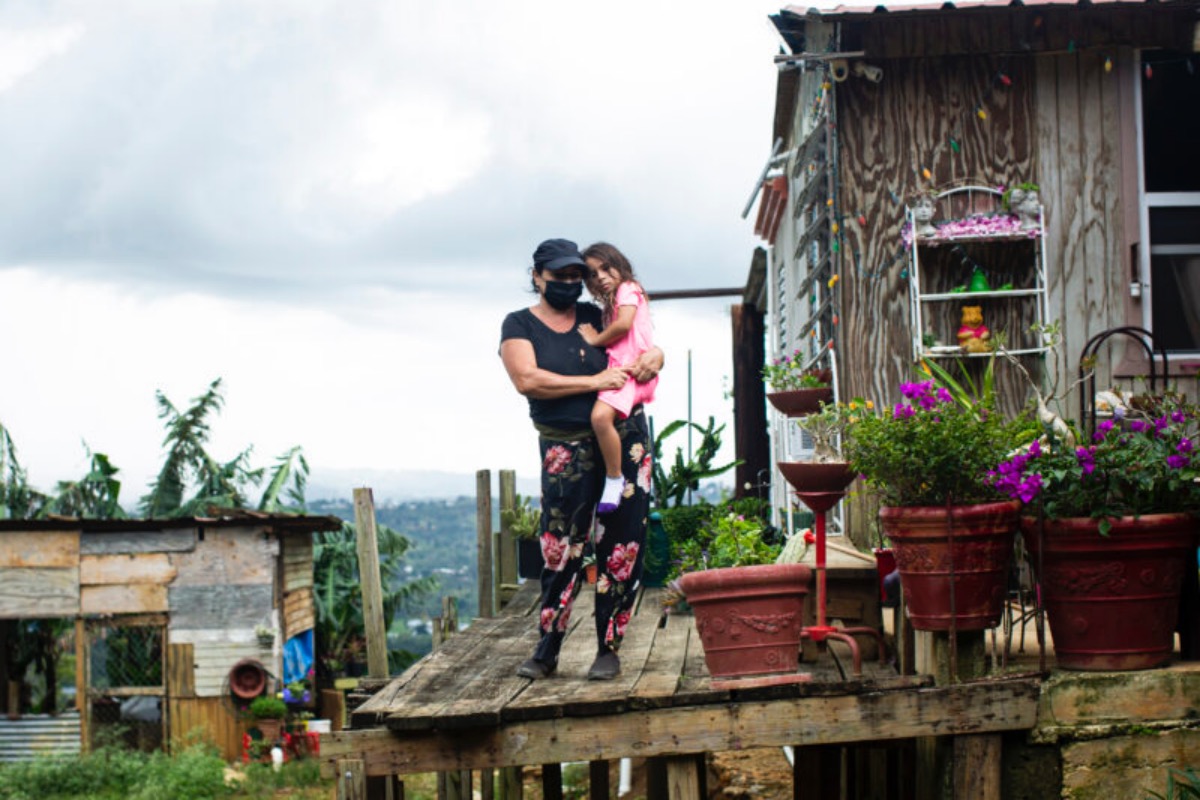

Virgén Baez Arocho, 54, with her four-year-old granddaughter Alisha at her home in Las Cuchillas community in Moca, Puerto Rico, on September 28, 2022. Baez has been without power or water for 10 days. She lives with one of her daughters, who suffers from multiple sclerosis, and a 13-year-old grandson. Baez, who is also collecting rainwater, received help from neighbors to learn how to make work a recently purchased power generator. Hurricane Fiona passed over the island as a Category 1 storm on September 18, leaving an island-wide power outage and many people without water service. (Erika P. Rodríguez/Centro de Periodismo Investigativo/Washington Post)
By LUIS J. VALENTÍN ORTIZ and WILMA MALDONADO, Centro de Periodismo Investigativo, and ARELIS R. HERNÁNDEZ, Washington Post
MOCA, Puerto Rico — Virgen Báez Arocho knew from surviving Hurricane María in 2017 that when the power goes out during a storm in Puerto Rico, the drinking water that flows into her home in a hilltop barrio is the next utility to run dry.
So as a lesser, Category 1 cyclone approached in late September, she did everything to prepare—collecting water in pots, buckets and a cistern to be sure her 30-year-old daughter, who suffers from multiple sclerosis, had enough to stay healthy after the storm.
Like many in Puerto Rico, the residents of Cuchillas depend on a system of pumps powered by electricity to defy gravity and send water from the river below. They were among thousands of communities across Puerto Rico that stood to benefit from nearly $5.6 billion in federal funds to ensure access to safe drinking water after a storm if the grid were to falter again. After María, thousands died, some from waterborne disease outbreaks, when the power and water weren’t restored for months.
Five years later, the island’s electrical system remains fragile despite an even larger infusion of Federal Emergency Management Agency (FEMA) funds to repair the grid and make it more resilient against future storms. To keep water running, officials must ensure there is a backup power source when the lights go out.
But when Fiona knocked out power across the island, at least three-fourths of the 917 pumping stations and 227 wells operated by the Aqueduct and Sewer Authority stopped working, according to government data obtained by Puerto Rico’s Center for Investigative Journalism (CPI) and the Washington Post—leaving thousands without water, some for weeks.
An analysis by CPI and the Post found that despite ample federal funding, less than one percent of the FEMA and U.S. Department of Housing and Urban Development (HUD) money slated for the island’s public water utility corporation since 2018 has been set aside to buy generators for water pumps. Local officials instead relied on a patchwork supply of emergency units but failed to get many in place ahead of the storm and supply them with enough diesel.
That meant that Puerto Ricans were left vulnerable to health risks including waterborne illnesses again. After Fiona, the island’s Department of Health reported 25 confirmed and 81 probable cases of leptospirosis, a bacterial disease caused by exposure to contaminated water and soil.
The lack of sufficient backup power on an island notorious for going dark even during mild summer rainstorms can be tied to decisions by Puerto Rican officials as well as a cumbersome process for federal funding through FEMA and HUD. The failures shed light on why, despite enormous federal funding, water and other essential services in Puerto Rico are still prone to collapse.
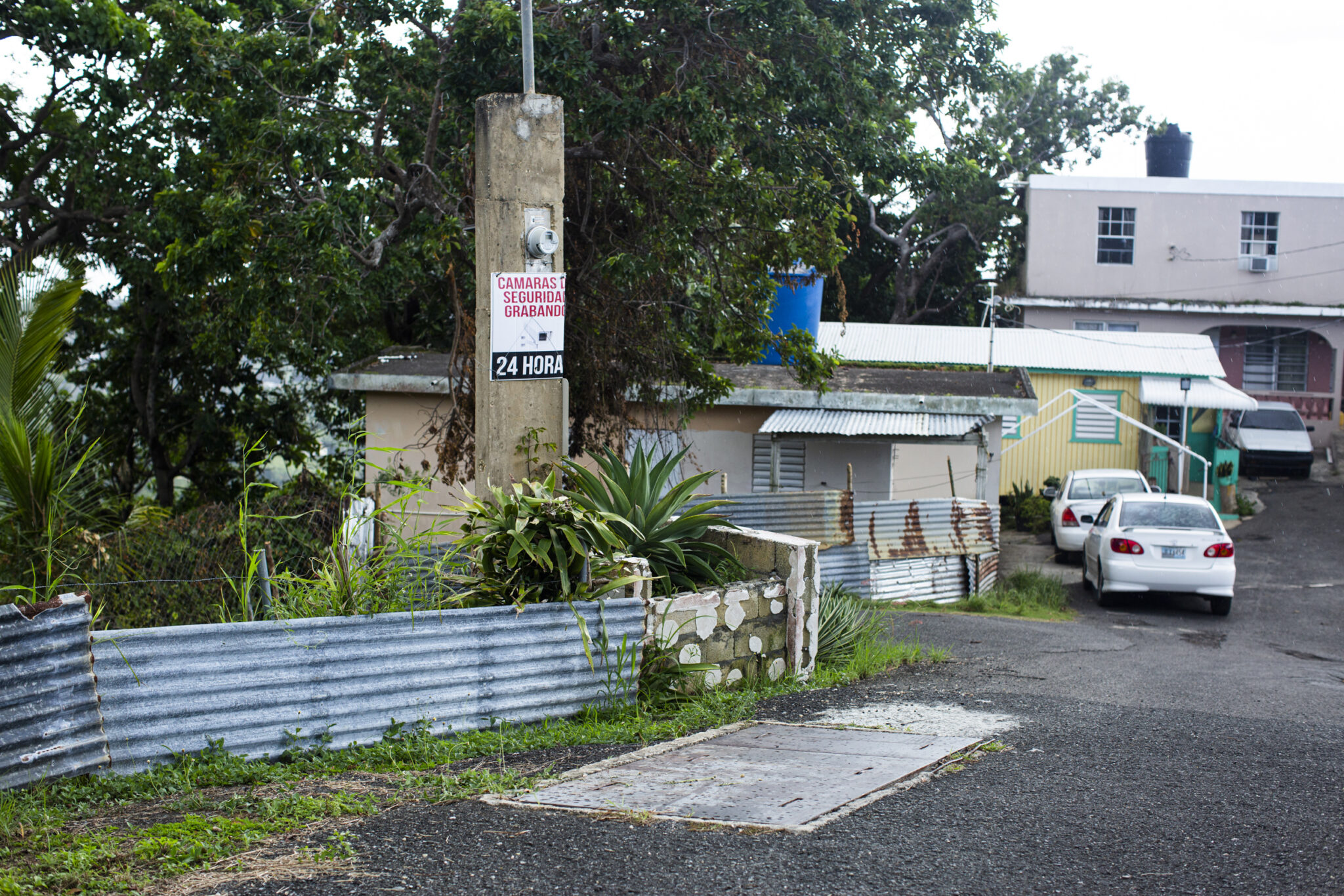

Residents of the Cuchillas neighborhood in Moca depend on a pumping system to carry water up the hill to their homes. (Erika P. Rodríguez/Centro de Periodismo Investigativo/Washington Post)
The water utility’s chief, Doriel Pagán, said she trusted that the electrical grid would keep working—despite ample evidence the system was still not reliable. A FEMA-funded plan to modernize the island’s electrical grid has been slow to get started. Local leaders said the Aqueduct and Sewer Authority’s plan to rent extra generators was haphazard at best: Some didn’t work, others never arrived, and those that did needed diesel, which was in short supply.
Although FEMA has offered funds to buy generators, Puerto Rican officials say the process for obtaining a slice of the billions available is languid and inefficient. There is also little financial incentive to do so: FEMA has been reimbursing the water utility for using rented generators.
FEMA and HUD have disbursed millions to Puerto Rico’s water agency—the vast majority toward infrastructure projects that will improve service but will still be rendered useless without power after a storm. FEMA defended the agency’s response efforts and said in a statement it is “moving as quickly as possible” to get projects approved.
The end result is that the island’s water system remains so unreliable that many communities are left to fend for themselves.
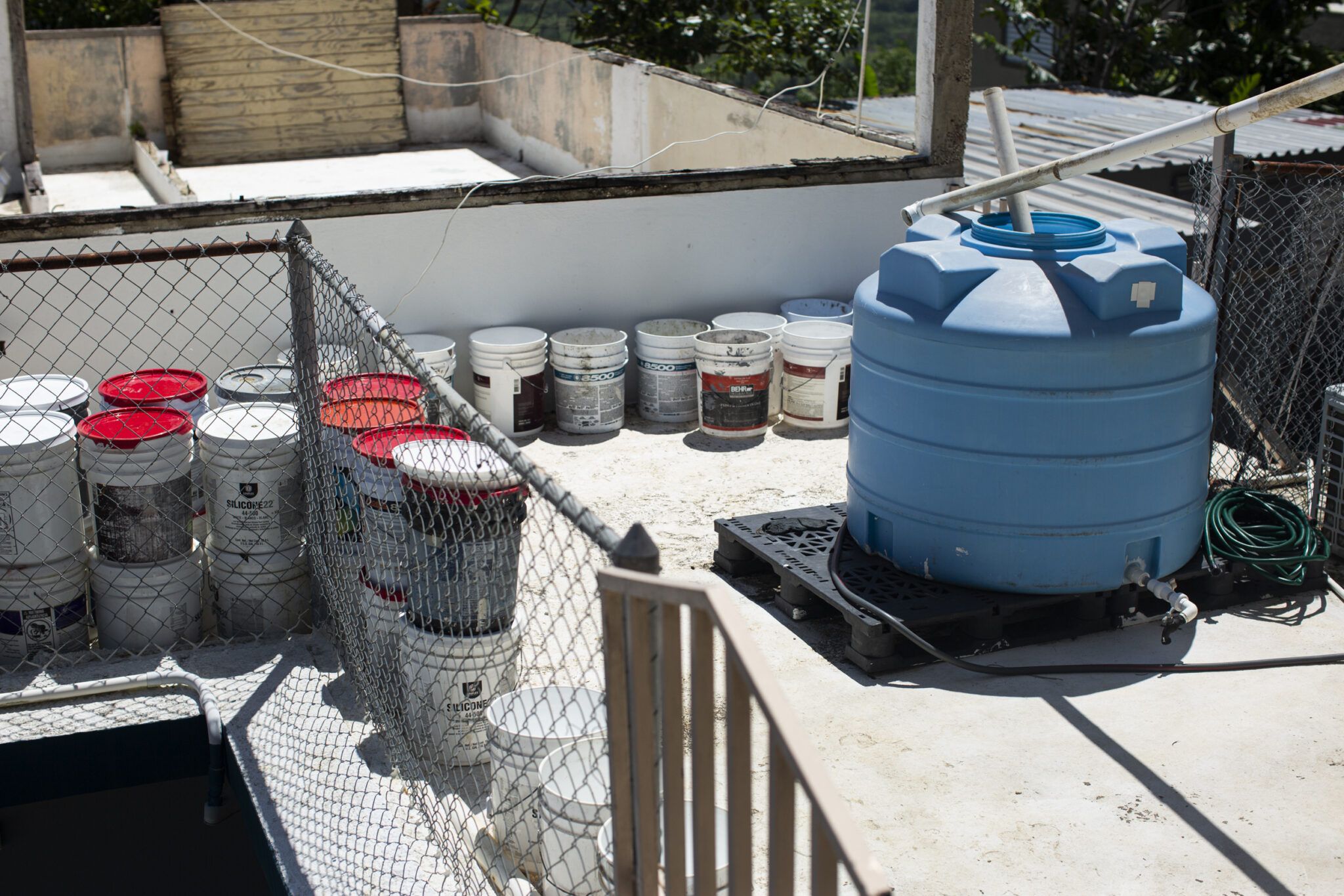

The collapse of the electrical system, as well as the lack of sufficient generators, caused thousands of residents to be left without drinking water — in some cases, for several weeks. (Erika P. Rodríguez/Centro de Periodismo Investigativo/Washington Post)
After Fiona, responsibility for keeping pumps running shifted from the water authority to ill-equipped municipal leaders who scrambled to find generators and supply cistern trucks with a dwindling supply of diesel, according to more than 30 mayors interviewed for this report.
“We want to be resilient,” said Jorge Pérez, the mayor of Utuado, a municipality hard hit by both storms. “But without clean water, there’s only so much we can do. It’s happening to all of us.”
Two weeks after Hurricane Fiona hit the island, Báez Arocho, 54, was still without water. Doctors sent an ambulance for her daughter, explaining she was safer in a hospital than at home, where the absence of water could make her vulnerable to infection.
“We are in crisis!” Báez Arocho cried to a group of commiserating neighbors who tried to calm her as she began wailing about the lack of water and struggled to breathe normally.
‘An Extremely Onerous Task’
In 2017, FEMA lent Puerto Rico hundreds of generators and reimbursed millions of dollars in fuel and maintenance costs after Hurricane María ravaged the island. Puerto Rico’s electrical grid was so severely damaged that generators were the only option to keep essential facilities like hospitals running while repairs were made.
After the power grid was patched back together, the federal agency took the generators back, but they set aside billions of federal dollars for the Puerto Rico Aqueduct and Sewer Authority(PRASA) so that next time the island could recover on its own.
Public records show PRASA submitted a $50 million request in 2020 to purchase generators through HUD but that the island’s Housing Department, which administers the federal funds, rejected it. Housing Department officials declined to say why the funds were not approved. PRASA officials said they later tried to purchase generators again through a newer HUD funding stream. That request to buy 589 generators remains in limbo because the program has not officially begun, said Rafael Vega, a spokesperson for the Puerto Rico Housing Department.
In a statement, HUD said it recognizes that “the pace of recovery must improve” and that water resiliency efforts are part of the department’s broader reconstruction and recovery initiatives focused on individual residences.
At least one bid to purchase generators did go through: FEMA approved a $14 million PRASA request to buy 43 generators for water pumps through its accelerated award strategy program created in 2020 to expedite funding for critical infrastructure, the agency’s director of external affairs, Juan Andrés Muñoz Torres, said. Under the award terms, PRASA can use the money and prioritize the projects as it chooses.
PRASA could point to just one project FEMA greenlit to install specially designed generators at the La Plata Lake Dam facility, which supplies nearly 400,000 customers, data shows. Work on the initiative won’t begin until at least 2024, the water utility said.
In an interview, Pagán said PRASA decided against using federal funds to buy generators, in part because they are impractical. Some pumping stations wouldn’t have enough space to install them, she added. The authority decided it would use its own easily accessible funds to buy and rent enough to keep critical installations running.
“Maintaining and operating more than 2,000 generators is an extremely onerous task,” Pagán said.
Juan Alicea, the former executive director of Puerto Rico’s Electric Power Authority, concurred that obtaining and installing power generators is not “the most cost-effective option, not even for a wealthy or sophisticated country.” But, he added, “given the deterioration of Puerto Rico’s power grid, I think it’s necessary.”
Maintaining generators throughout the island can be economically and environmentally taxing, said former PRASA board member Félix Aponte, who served from 2014 to 2020. During his time, Aponte said he insisted the agency look at solar power as a backup energy source instead of generators, “but they didn’t buy my argument.”
Short-Term Gambles
To ensure it could keep about 70 percent of its system functioning after a storm, the utility banked on a supply of 1,250 generators it owns and entered into pricey rental agreements to cover the remainder.
Between June 1 and November 30, 2022, PRASA agreed to pay more than $670,000 monthly to hold 235 units in reserve, contract records show. Once PRASA needed them, the firms would charge a rental fee two to three times the reserve fee.
PRASA defended the deal, saying it is more cost-effective to reserve and rent generators than to buy them. But Alicea, the former electric authority director, described it as “a difficult expense to justify from a public service perspective, especially once the audits get done.”
“I don’t see how this is an attractive option for the agency’s executives,” he said.
With that patchwork system of generators in place, about a third of Puerto Rico’s water facilities would have no backup if the power went out—if everything went according to plan.
PRASA leadership met two days before Fiona made landfall, but storm preparation —much less generators— was left off the agenda. It wasn’t until a customer service representative raised the question toward the end that Pagán said that crews had positioned 55 generators to the “most sensitive areas” and had other previously rented units in reserve to deploy once the storm passed.
That meant nearly half of all their installations —937 out of 2,172 water and sewer facilities— were left without any source of auxiliary power as the hurricane approached, according to data obtained from PRASA.
Asked why the agency didn’t position more generators in advance, Pagán said she thought the island’s electrical grid would hold up this time around.
“Well, one always expects the system will work and we would have electricity,” she said. “That wasn’t the case.”
‘The Moment of Truth’
When Hurricane Fiona lashed the island archipelago, PRASA was again forced to solicit 383 generators from FEMA. Nine days after the storm struck, only 13 had arrived—and thousands of people across the island were still without potable water.
PRASA’s gamble underestimated the force of climate-change-era storms, and its rental program failed to deliver the service or efficiency customers expect, local leaders, residents, and experts said.
Two of the system’s most critical water plants —La Plata and Antonio Vázquez— stalled after the storm. The former lacked a generator and the latter’s existing generator was damaged by a power surge. Two major filtration plants also shut down without any emergency power source.
In a statement, a FEMA spokesperson said the U.S. Army Corps of Engineers ultimately installed 54 generators. The power came back earlier than expected, rendering many of the requests unnecessary.
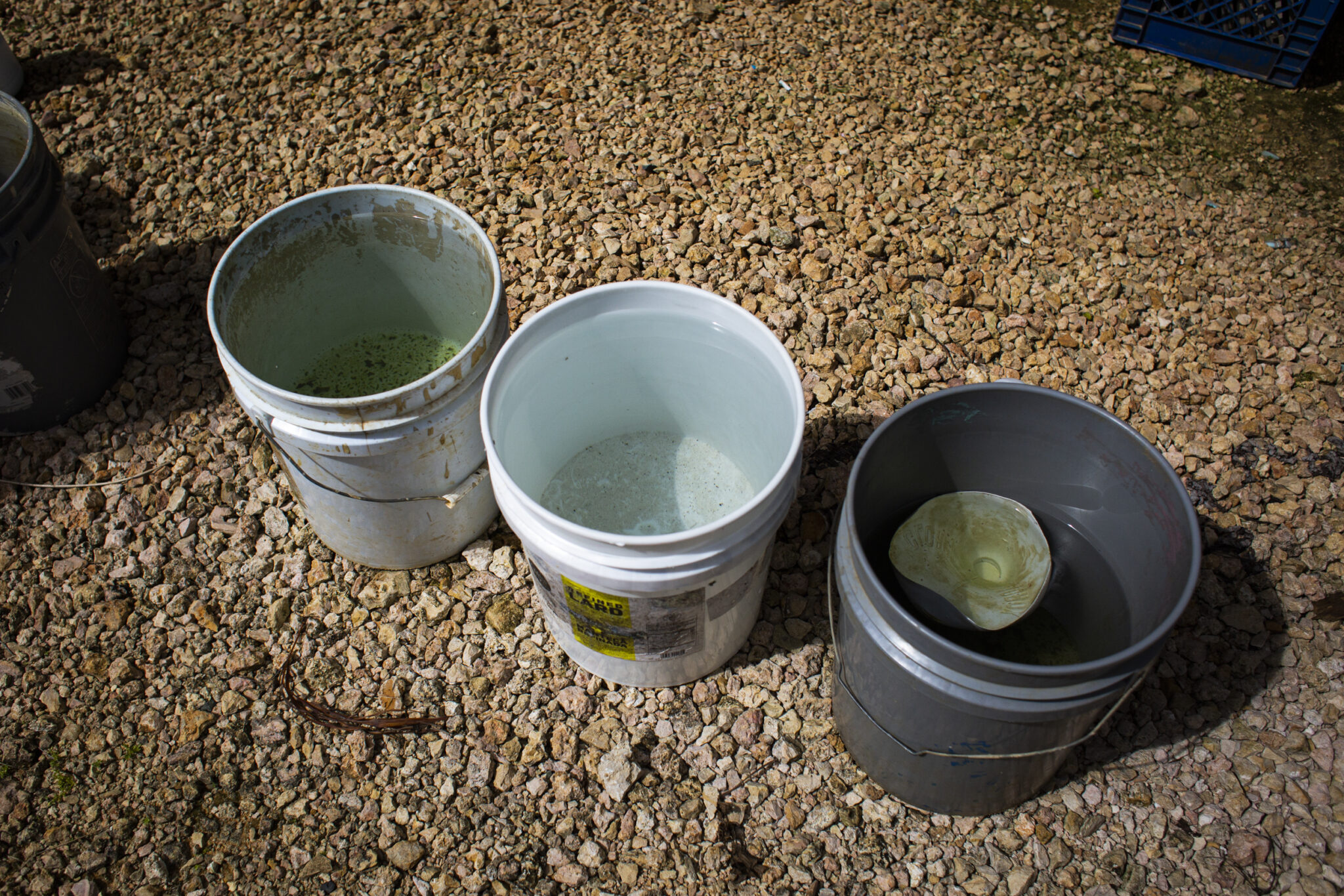

Due to the lack of water service, residents of the Cuchillas neighborhood had to store water. (Erika P. Rodríguez/Centro de Periodismo Investigativo/Washington Post)
Mayors of towns throughout Puerto Rico described similar experiences in Fiona’s aftermath: The water authority failed to provide sufficient generator power for local water facilities and also deployed an insufficient number of potable water trucks. Not only were generators and trucks missing or inoperable, mayors said, but the administration struggled to get the diesel fuel it had reserved to its existing fleet during the period of powerlessness.
José Hiram Soto, the mayor of the coffee-growing community of Adjuntas, said PRASA commissioned one of its rented generators to his community. But the equipment and fuel to operate it never arrived. In other parts of Puerto Rico, generators arrived but didn’t work.
“They brought this huge generator, but it didn’t have enough power to run the water pump,” said Clemente Agosto, the mayor of Toa Alta, located on the island’s northern coast. “They choked. They initiated these massive mobilizations without knowing what kind of capacity they had. The [generators] never worked.”
Moca Mayor Ángel Pérez Rodríguez scrambled to find generators to rent on his own so he could deliver water to his constituents. Of the 13 PRASA facilities in his municipality, six had no backup power—leaving approximately 12,000 people without water. The mayor managed to locate two extra generators.
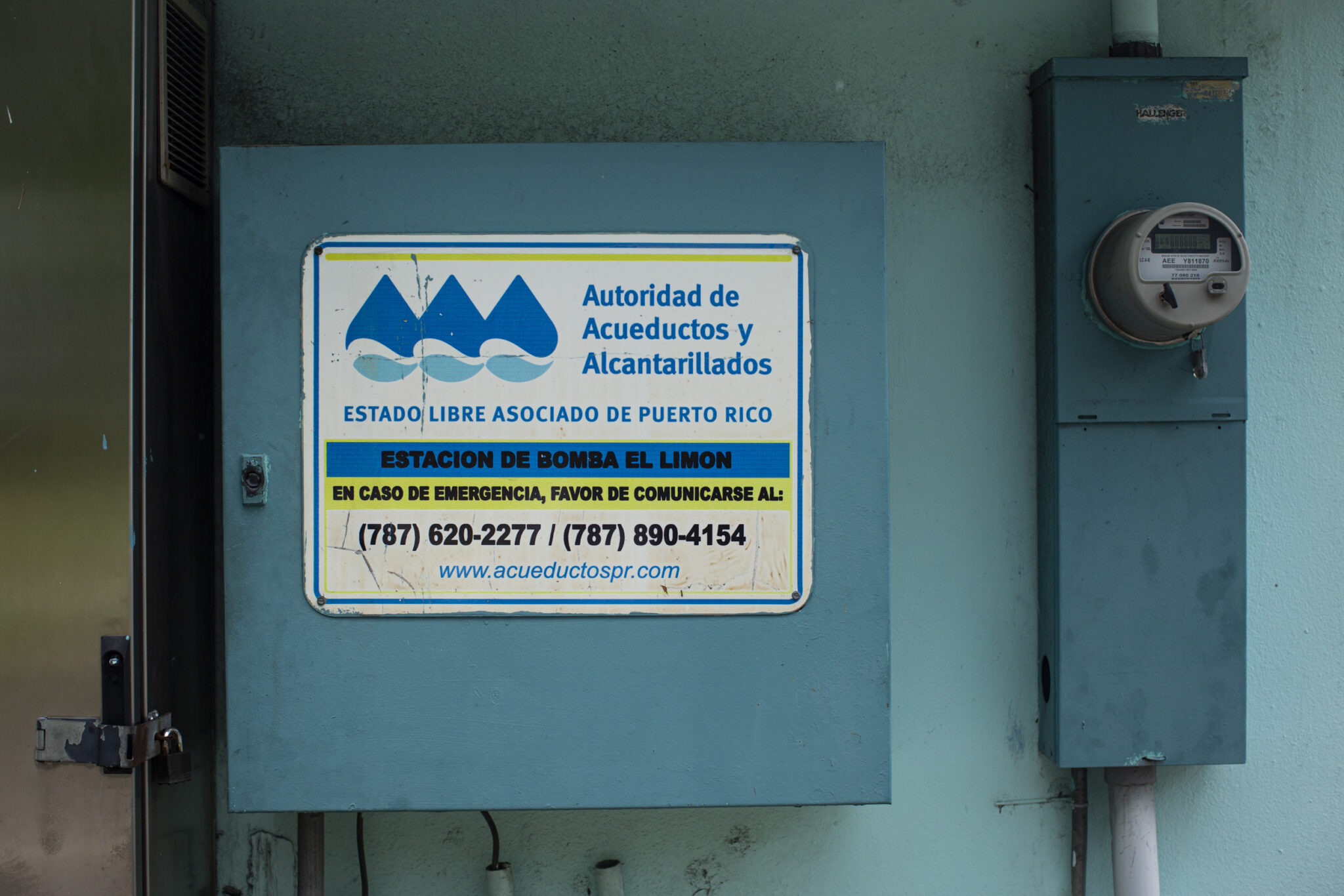

The Cuchillas neighborhood in Moca is supplied by the El Limón pump station. It does not have a permanent electric generator that guarantees its operation when the power goes out. (Erika P. Rodríguez/Centro de Periodismo Investigativo/Washington Post)
Similar stories played out in at least 10 other largely mountainous communities where mayors had to search for generators after the storm. When diesel became scarce, more than a dozen had to buy and provide fuel for them, too.
PRASA’s diesel distributors had trouble delivering orders when fuel became scarce. Contracts show that the utility turned to other firms to make up for the shortages. But that wasn’t enough either. Other agencies including Puerto Rico’s General Services Administration jumped in to share their limited supply with PRASA.
Pérez Rodríguez said his tiny government in Puerto Rico’s northwest region supplied 200 gallons of diesel 10 days after Fiona, when Moca’s communities were still without reliable water. The mayor of the municipality of 35,000 said he remembered meeting with PRASA officials who assured him before the storm that the utility was ready and equipped for whatever emergency should arise.
“But at the moment of truth…” he trailed off. In one neighborhood, the mayor said, residents and municipal employees repaired the motor of one of the utility’s generators themselves to get it working.
‘Not a Way to Live’
The neighbors in Cuchillas went nearly as long without water after Fiona as they did five years earlier, when María struck.
They used buckets and towels to bathe and recycled the water to flush the toilets. Residents, many of whom live on fixed incomes, said they spent more than $100 a week to fill their cisterns or buy bottled water. Those who couldn’t afford the expense risked contamination and disease by drawing from local streams and springs or collecting rainwater. And the water bill still comes.
“Here everyone has a pickup because they know at some point they will need to haul water,” said resident Adalberto González.
Báez Arocho struggled to devise workarounds to get by without power or water while her nerves frayed a little more each day. Her own health suffered as she worried about her daughter. Her rheumatoid arthritis flared, causing her joints to grow stiff and her limbs to swell. The resilience the mother had built over the years was quickly running out.
When the energy company first tried to restore power in Cuchillas, the surge caused a transformer to explode. Residents had to wait for either a generator or a repair crew to fix the power lines.
The mercy of living on a Caribbean island is that when the tap runs dry, Juan Arocho Nieves can count on frequent tropical rains to provide a service his government doesn’t: a consistent flow of usable, if not potable water. The 57-year-old uses rainwater collected through an elaborate system of cisterns and buckets and a robust supply of bleach to clean his bedridden mother’s sheets well enough to stave off life-threatening infections.
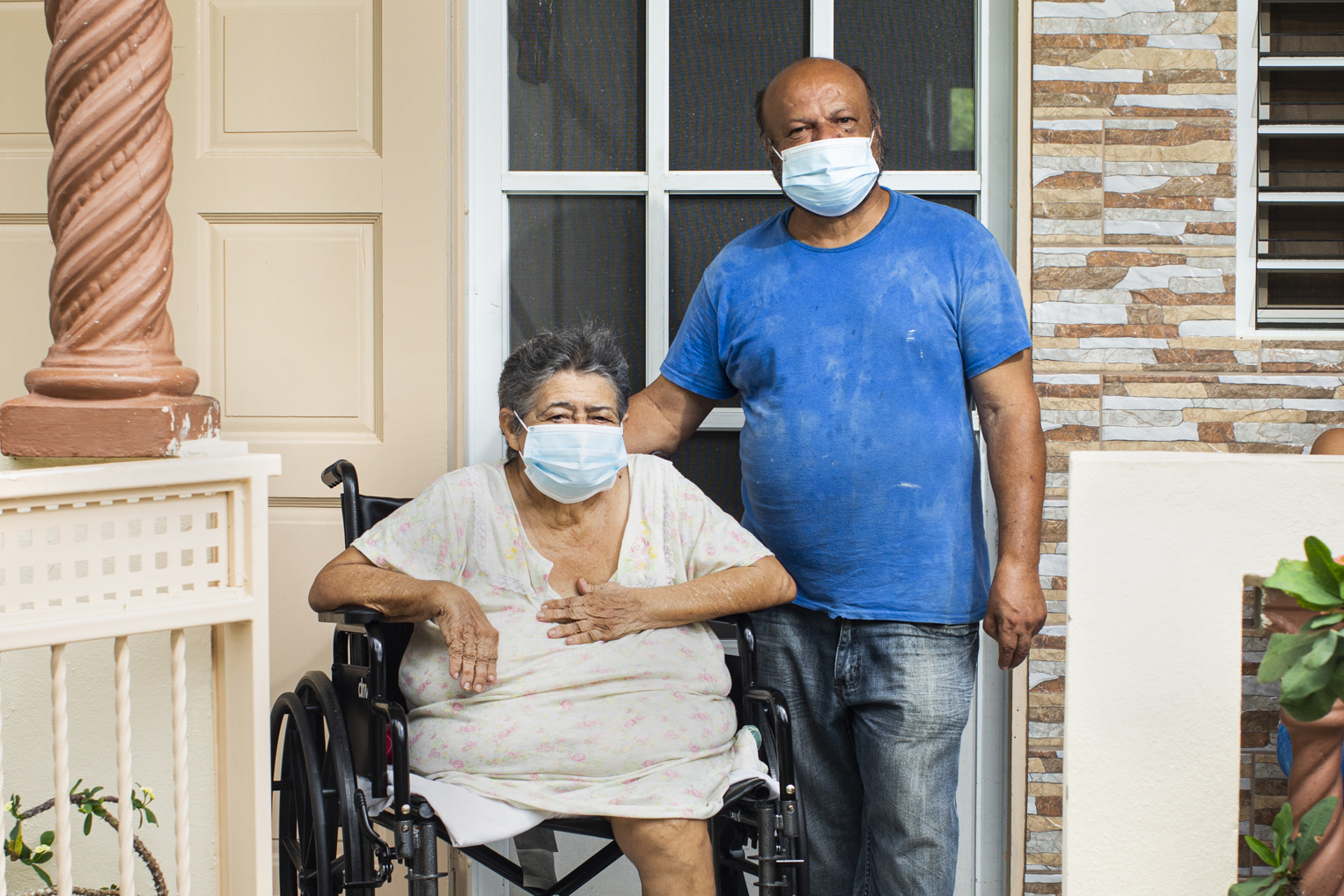

Juan Nieves Arocho and his mother (Erika P. Rodríguez/Centro de Periodismo Investigativo/Washington Post)
“This is not a way to live,” said Arocho Nieves, who has battled the water utility for years to properly maintain and provide backup power for its local water pump. “The rain is what saves us, but what about our government? Are they paying attention?”
It was anyone’s guess when the water might return. It eventually did—three weeks after Fiona struck.
“It’s as if we live in a desert,” he lamented, “on a tropical island.”
For Báez Arocho, weeks without water brought a painful realization. Maria had taught her not to count on the government for help after a storm. But even after investing in solar panels, a cistern and a $500 generator, she couldn’t collect and boil enough water to ensure her family’s safety.
Her daughter is now home from the hospital. But the family remains at the whims of Puerto Rico’s insecure power grid. FEMA supplied the generator that powered the pumps back to life in her neighborhood but will remove it once electricity is reliably restored. Residents fear that means it’ll be taken away before another storm hits — and the power goes out again.
“You try to prepare for everything,” she said. “But some things are out of your hands.”
—
Vanessa Colón Almenas, Rafael Díaz Torres and Luis Joel González Méndez of CPI contributed to this report.


